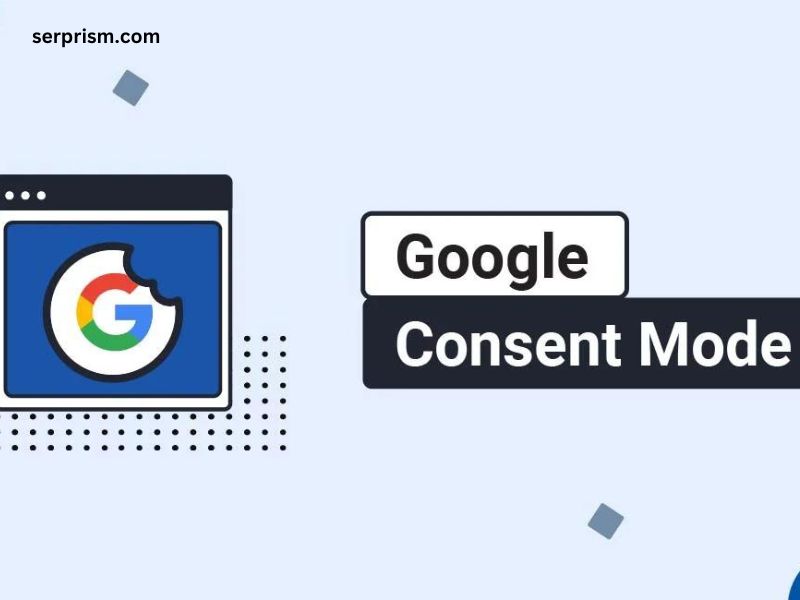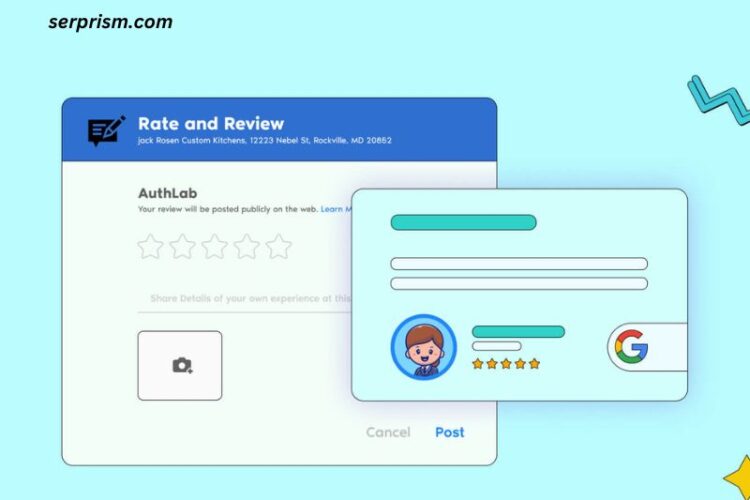
Consent Mode is a privacy-focused feature designed to give users greater control over their personal data and online activities. It is a mechanism that ensures websites and applications obtain explicit permission from individuals before collecting, using, or sharing their information. This mode empowers users to make informed decisions about their data privacy preferences.
Consent Mode operates on the principle of transparency and user autonomy. It requires websites and applications to clearly explain the types of data they intend to collect, the purposes for which it will be used, and any third parties with whom the data may be shared. Users can then decide whether to grant or deny consent for each specific data processing activity.
By implementing Consent Mode, organizations demonstrate their commitment to respecting user privacy and adhering to data protection regulations, such as the General Data Protection Regulation (GDPR) and the California Consumer Privacy Act (CCPA). This approach fosters trust and transparency between businesses and their customers or users.
The importance of Consent Mode
In today’s digital age, personal data has become a valuable commodity, and individuals are increasingly concerned about how their information is being used. Consent Mode plays a crucial role in addressing these concerns by giving users control over their data and ensuring that their privacy rights are respected.
Enabling Consent Mode is not only a legal requirement in many jurisdictions but also a ethical responsibility for organizations. By obtaining explicit consent, businesses can demonstrate their commitment to transparency and build trust with their customers or users.
Furthermore, implementing Consent Mode can help organizations avoid potential legal and financial consequences associated with non-compliance with data protection regulations. Failure to obtain proper consent can result in hefty fines, reputational damage, and loss of customer trust.
How Consent Mode works
Consent Mode typically involves the following steps:
- Disclosure: Websites or applications must clearly and transparently disclose the types of personal data they intend to collect, the purposes for which it will be used, and any third parties with whom the data may be shared.
- Consent Request: Users are presented with a consent request, often in the form of a pop-up or banner, that outlines the specific data processing activities and allows them to grant or deny consent for each activity.
- User Choice: Users have the option to provide their consent by actively selecting their preferences or declining consent. The consent request should be clear, unambiguous, and easily accessible.
- Data Processing: If the user grants consent, the website or application can proceed with the specified data processing activities. If consent is denied, the organization must respect the user’s choice and refrain from collecting or processing the relevant personal data.
- Consent Tracking: Organizations must maintain records of user consent choices to demonstrate compliance with data protection regulations.
- Consent Withdrawal: Users should have the ability to withdraw their consent at any time, and organizations must respect and implement this withdrawal in a timely manner.
Benefits of using Consent Mode
Implementing Consent Mode offers several benefits for both organizations and users:
- Compliance with Data Protection Regulations: Enabling Consent Mode helps organizations comply with data protection regulations, such as the GDPR and CCPA, which require obtaining explicit consent for certain data processing activities.
- Increased Trust and Transparency: By giving users control over their personal data, organizations foster trust and transparency, enhancing their reputation and customer relationships.
- User Empowerment: Consent Mode empowers users by allowing them to make informed decisions about their data privacy preferences, promoting a sense of control and autonomy.
- Risk Mitigation: Proper implementation of Consent Mode can help organizations mitigate legal and financial risks associated with non-compliance with data protection regulations.
- Competitive Advantage: In an increasingly privacy-conscious market, organizations that prioritize user consent and data protection may gain a competitive advantage over those that do not.
How to check if Consent Mode is enabled
To ensure that your organization is complying with data protection regulations and respecting user privacy, it is essential to verify whether Consent Mode is enabled and functioning correctly. Here are the steps to check if Consent Mode is enabled:
- Review Privacy Policies and Consent Mechanisms: Examine your organization’s privacy policies and consent mechanisms to ensure they are up-to-date, transparent, and comply with applicable data protection regulations.
- Test the Consent Flow: Visit your website or application as a user and go through the consent flow. Observe if a clear and unambiguous consent request is presented, and if users are given the option to grant or deny consent for specific data processing activities.
- Check Consent Tracking and Records: Verify that your organization maintains accurate records of user consent choices, including the date, time, and specific preferences granted or denied.
- Monitor Consent Withdrawal Processes: Ensure that users have the ability to withdraw their consent at any time, and that your organization has processes in place to promptly honor and implement consent withdrawals.
- Conduct Regular Audits: Regularly audit your organization’s consent practices, including consent requests, tracking mechanisms, and withdrawal processes, to identify and address any issues or areas for improvement.
Steps to enable Consent Mode
If Consent Mode is not currently enabled in your organization, follow these steps to implement it:
- Conduct a Data Inventory: Identify the types of personal data your organization collects, processes, and stores, as well as the purposes for which this data is used.
- Review Legal Requirements: Familiarize yourself with the relevant data protection regulations, such as the GDPR or CCPA, and understand the specific requirements for obtaining user consent.
- Develop Consent Mechanisms: Design clear and transparent consent mechanisms, such as pop-ups or banners, that allow users to grant or deny consent for specific data processing activities.
- Update Privacy Policies: Revise your organization’s privacy policies to include detailed information about the types of data collected, the purposes for which it is used, and any third parties with whom the data may be shared.
- Implement Consent Tracking: Establish processes and systems to accurately track and record user consent choices, including the date, time, and specific preferences granted or denied.
- Train Employees: Ensure that all relevant employees, including those involved in data processing and customer-facing roles, are trained on the importance of Consent Mode and how to properly implement and respect user consent choices.
- Conduct User Testing: Test your consent mechanisms with a sample of users to ensure they are clear, accessible, and user-friendly, making adjustments as necessary.
- Launch and Monitor: Roll out your Consent Mode implementation, and continuously monitor and audit your consent practices to identify and address any issues or areas for improvement.
Common issues with Consent Mode and how to troubleshoot them
While implementing Consent Mode is crucial for data protection compliance and user privacy, organizations may encounter various challenges and issues. Here are some common issues and troubleshooting tips:
- Unclear or Ambiguous Consent Requests: If users find the consent requests confusing or unclear, they may inadvertently grant or deny consent without fully understanding the implications. To address this issue, ensure that consent requests are written in plain language, provide clear explanations of the data processing activities, and offer easily understandable options for granting or denying consent.
- Lack of Granular Consent Options: Some organizations may present a single, all-or-nothing consent option, which does not allow users to selectively grant or deny consent for specific data processing activities. To mitigate this issue, provide granular consent options that allow users to choose their preferences for each type of data processing activity.
- Consent Tracking and Record-Keeping Issues: Maintaining accurate records of user consent choices is crucial for compliance purposes. If your organization encounters issues with consent tracking or record-keeping, review your processes and systems to ensure they are robust and reliable. Consider implementing automated consent tracking solutions or regularly auditing your consent records.
- Consent Withdrawal Challenges: Users should be able to withdraw their consent at any time, but some organizations may struggle to implement this effectively. To address this issue, establish clear processes for consent withdrawal, ensure that withdrawal requests are promptly honored, and communicate the withdrawal process transparently to users.
- Privacy Policy Updates and Consent Renewal: As your organization’s data processing practices or legal requirements change, you may need to update your privacy policies and obtain renewed consent from users. Communicate these changes clearly and provide users with the opportunity to review and consent to the updated policies.
By proactively addressing these common issues and implementing robust consent management practices, organizations can ensure compliance with data protection regulations and maintain user trust.
Best practices for using Consent Mode
To maximize the benefits of Consent Mode and ensure effective implementation, consider the following best practices:
- Prioritize User Experience: Design consent mechanisms that are user-friendly, accessible, and seamlessly integrated into your website or application. Avoid intrusive or disruptive consent requests that may frustrate users.
- Provide Clear and Concise Information: Ensure that your consent requests and privacy policies are written in plain language, free from legal jargon or technical terms that may confuse users.
- Offer Granular Consent Options: Allow users to selectively grant or deny consent for specific data processing activities, rather than presenting an all-or-nothing approach.
- Implement Robust Consent Tracking: Establish reliable systems and processes for accurately tracking and recording user consent choices, including the date, time, and specific preferences granted or denied.
- Respect User Choices: Strictly adhere to user consent preferences and promptly honor any requests to withdraw consent.
- Regularly Review and Update: Continuously review and update your consent mechanisms, privacy policies, and consent tracking processes to ensure compliance with evolving data protection regulations and industry best practices.
- Provide Training and Awareness: Educate and train all relevant employees on the importance of Consent Mode, user privacy, and the proper implementation of consent management practices.
- Foster Trust and Transparency: Be transparent about your organization’s data processing practices and prioritize building trust with users by respecting their privacy preferences.
By following these best practices, organizations can effectively implement Consent Mode, comply with data protection regulations, and foster a culture of user privacy and trust.
Alternatives to Consent Mode
While Consent Mode is a widely adopted approach to data protection compliance and user privacy, there are alternative methods that organizations may consider:
- Legitimate Interest: Under certain data protection regulations, such as the GDPR, organizations may process personal data without explicit consent if they can demonstrate a legitimate interest that outweighs the potential risks to individuals’ rights and freedoms.
- Contractual Necessity: In some cases, organizations may be able to process personal data without explicit consent if the data processing is necessary for the performance of a contract with the individual.
- Legal Obligation: If an organization is legally required to process personal data, such as for tax or law enforcement purposes, explicit consent may not be necessary.
- Anonymization and Pseudonymization: By anonymizing or pseudonymizing personal data, organizations may be able to process the data without the need for explicit consent, as the data can no longer be directly attributed to an identifiable individual.
- Privacy by Design: Implementing a “privacy by design” approach, where data protection and privacy considerations are integrated into the design and development of products, services, and processes from the outset, can help organizations minimize the need for explicit consent in certain scenarios.
It is important to note that these alternatives may have specific requirements and limitations, and organizations should carefully evaluate their applicability based on the relevant data protection regulations and their specific data processing activities.
Conclusion
Enabling Consent Mode is a crucial step for organizations to comply with data protection regulations, respect user privacy, and foster trust with their customers or users. By implementing transparent consent mechanisms, providing clear information, and offering granular consent options, organizations can empower individuals to make informed decisions about their personal data.
While the implementation of Consent Mode may present challenges, addressing common issues and following best practices can help organizations overcome these hurdles and establish robust consent management practices. Additionally, exploring alternative approaches, such as legitimate interest or anonymization, may be appropriate in certain scenarios.
Ultimately, prioritizing user privacy and adhering to data protection regulations is not only a legal obligation but also a ethical responsibility that can contribute to an organization’s reputation, customer relationships, and long-term success.
To ensure your organization is compliant with data protection regulations and respecting user privacy, we encourage you to take action and enable Consent Mode. Our team of experts can guide you through the process, providing tailored solutions and best practices to streamline your consent management practices. Contact us today to learn more about how we can help you prioritize user privacy and build trust with your customers or users




